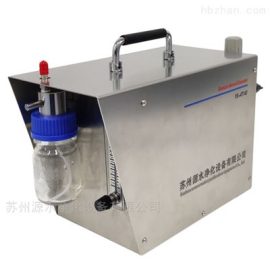
# Aerosol Generator: Principles, Applications, and Future Prospects
Aerosol Generator: Principles, Applications, and Future Prospects
An aerosol generator is a device designed to produce fine particles or droplets suspended in a gas, typically air. These devices are widely used in various fields, including medical research, environmental studies, and industrial applications. Understanding the principles behind aerosol generation, its applications, and future prospects is essential for leveraging its potential in diverse sectors.
Principles of Aerosol Generation
Aerosol generators operate on several principles, depending on the desired particle size and application. Common methods include:
- Nebulization: This process involves breaking up a liquid into fine droplets using ultrasonic waves or compressed air. It is commonly used in medical inhalers and respiratory therapy.
- Atomization: High-pressure liquid is forced through a small nozzle, creating a fine mist. This method is often used in spray painting and fuel injection systems.
- Condensation: Vapors are cooled to form tiny liquid or solid particles. This technique is used in environmental studies to simulate atmospheric conditions.
- Electrospray: An electric field is applied to a liquid, causing it to form charged droplets. This method is used in mass spectrometry and nanotechnology.
Applications of Aerosol Generators
Aerosol generators have a wide range of applications across various industries:
- Medical Field: Aerosol generators are used in drug delivery systems, particularly for respiratory diseases like asthma and COPD. They ensure precise dosing and effective delivery of medication to the lungs.
- Environmental Research: These devices are used to study air quality, pollution, and the behavior of particulate matter in the atmosphere. They help in understanding the impact of aerosols on climate and health.
- Industrial Applications: Aerosol generators are employed in coating processes, such as spray painting and surface treatment. They are also used in the production of nanomaterials and in the food industry for flavor encapsulation.
- Scientific Research: In laboratories, aerosol generators are used to create controlled environments for experiments, such as studying particle dynamics or testing filtration systems.
Future Prospects of Aerosol Generators
The future of aerosol generators looks promising, with advancements in technology opening up new possibilities:
- Enhanced Precision: Ongoing research aims to improve the precision and control of aerosol generation, enabling more accurate dosing and particle size distribution.
- Miniaturization: The development of compact and portable aerosol generators could revolutionize fields like personalized medicine and on-site environmental monitoring.
- Smart Systems: Integration with IoT and AI could lead to smart aerosol generators that adapt to real-time conditions, optimizing performance and efficiency.
- Sustainability: Future designs may focus on reducing energy consumption and minimizing waste, aligning with global sustainability goals.
In conclusion, aerosol generators play a crucial role in various industries, offering versatile solutions for particle generation and delivery. As technology continues to evolve, these devices are expected to become even more efficient, precise, and adaptable, paving the way for innovative applications and advancements.
Keyword: Aerosol Generator
